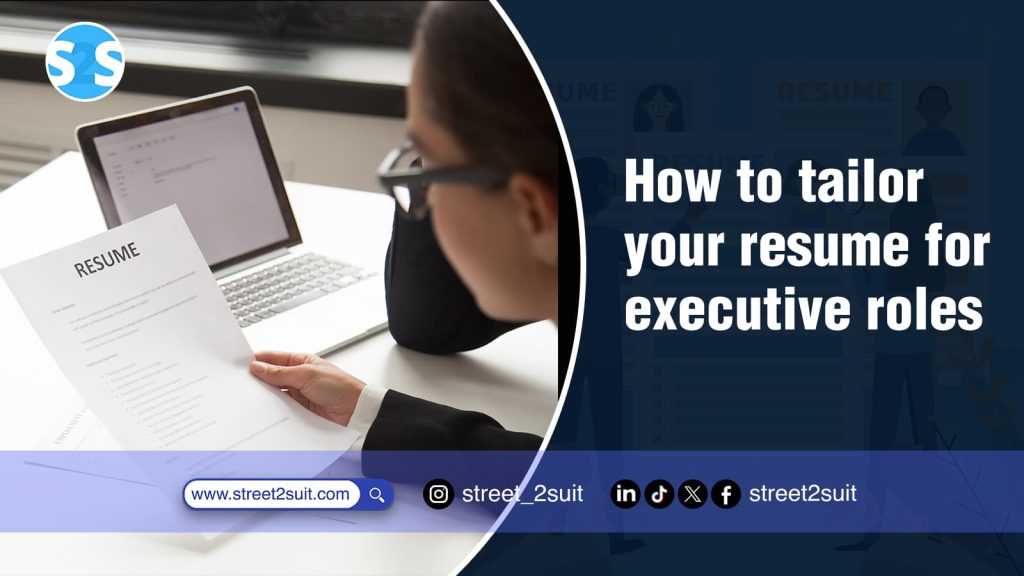You’ve climbed the career ladder, polished your LinkedIn profile, and suddenly realized that your resume still screams “mid-level manager trying hard.” Don’t panic. You just need to give it an executive-level makeover.
1. Start with a Boardroom-Worthy Summary
Your executive resume doesn’t need an “Objective” that merely states “To grow and develop with an organization…” No, darling. You’re not a seedling; you’re the gardener.
What to do instead:
Craft a Professional Summary that highlights your leadership, impact, and strategic vision.
Example:
“Strategic leader with 15+ years of driving multimillion-dollar growth across global markets, building high-performance teams, and transforming chaos into quarterly wins.”
Boom. That’s how you introduce yourself to a C-suite audience—not with “enthusiastic team player.”
2. Achievements, Not Responsibilities
If your resume states, “Responsible for overseeing the sales team,” we’re already yawning. Executives don’t list tasks; they showcase results.
Try this instead:
“Increased regional sales revenue by 45% in 12 months by implementing a performance-based incentive system.”
This indicates, “I don’t just lead; I lead to achieve results.” That’s the executive energy we’re channeling.
3. Use Metrics Like You Use Phone—Frequently and Boldly
Numbers don’t lie. They also don’t get ignored. Sprinkle metrics throughout your resume like Salad cream on Salads—liberally and proudly.
Did you grow your client base by 250%? Say it.
Did you cut operational costs by 30%? Shout it.
Did you survive four CEOs in three years and still thrive? Frame it.
Remember: Executives don’t just “work hard.” They “deliver measurable growth.”
4. Ditch the Buzzwords That Says “Nothing“
We’re looking at you: “go-getter,” “synergy,” “dynamic professional.” These words are the resume equivalent of elevator music—inoffensive, forgettable, and mildly annoying.
Instead, use powerful verbs and clear language. Think: “led,” “scaled,” “orchestrated,” “accelerated,” “transformed.”
Bad: “Results-oriented professional with great communication skills.”
Better: “Led, create strategy that doubled customer satisfaction ratings in under a year.”
Because you’re not just good—you’re statistically awesome.
5. Customize Like a Baker at a Fancy Bakery
You wouldn’t serve Samosa to someone who requested a Fish roll with a Ketchup. Likewise, don’t send the same resume for every executive role.
Tailor your resume to:
- The specific industry (Tech executive or Healthcare executive)
- The company’s values
- The keywords in the job description (because Applicant Tracking Systems are picky robots)
Bonus tip: Mirror the language in the job ad—just don’t plagiarize it like a teenager on a deadline.
6. Executive Formatting: Keep It Clean and Crisp
We know you want to show you can use design software, but now is not the time for florals and funky fonts. Think classic, modern, and minimal. One page if you can. Two if you must.
Read that again!
Use:
- Bold headers
- Strategic white space
- Bullet points that hit like a TED Talk opener
Avoid rainbow borders unless you’re applying to be the CEO of Paint Company.
7. Highlight Leadership & Vision (Not Just the Grind)
Executives aren’t hired to merely “manage.” They’re hired to inspire, innovate, and drive change. Show how you:
- Built a culture
- Developed future leaders
- Navigated organizational change
- Positioned the company for growth during economic downturns
Pro tip: Include a section like “Key Leadership Highlights” before listing roles. It adds gravitas. And who doesn’t want gravitas? Definitely not me.
8. Soft Skills? Yes—but Make Them Sound Like Superpowers
Don’t just say you’re “a good communicator.” Say you “influenced stakeholder buy-in across global departments, leading to a six-month acceleration in product launch timelines.”
That’s communication. That’s influence. That’s suave.
9. Include Board Roles, Media Features, and Speaking Engagements
If you’ve been on a panel, podcast, or featured in a Forbes article (even a quote), include it. Executive presence isn’t just internal—it’s public.
If you haven’t had these opportunities yet, get started! Write an article on LinkedIn or speak at a local business forum. Then, showcase it on your resume.
10. Call It What It Is
For the love of seniority, if you were functioning as a Director, don’t downplay your role. Don’t!
Conclusion
An ideal executive resume is comparable to a tailored suit—well-fitted, sharp, and capable of commanding attention without being overly flashy.
Remember, you’re not just “applying for jobs.” You are positioning yourself as the solution to significant, high-stakes problems.
Go ahead, refine your resume, and step into your next boardroom or Zoom call with the confidence of a leader you already are.
Now, make that resume as polished as a custom Armani, and don’t forget to strike a power pose!
Receive the latest job and career updates in your inbox, every week!




